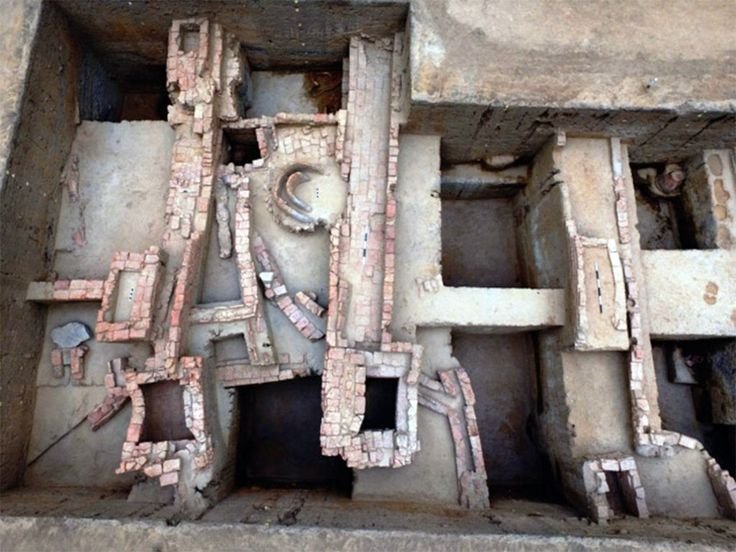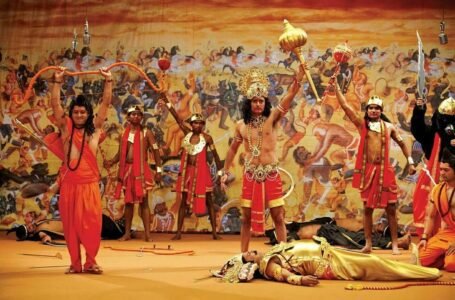Diggings and Disputes: The Keeladi Excavations

-Bhoomee Vats
One of the most significant archaeological discoveries of Indian history was made from the ancient soils of Keeladi, a small village on the banks of the Vaigai River in Tamil Nadu. The excavation, which was once a humble attempt at discovering and exploring history, turned into a focal point in a heated political discourse. This discourse raises a significant question: who owns history? And who has the right to decide how it gets told?
Initiated in 2014-15, the Keeladi excavation was led by archaeologist Amarnath Ramakrishna of the Archaeological Survey of India (ASI). The archaeologist and his team uncovered a well-planned urban settlement believed to have existed in the 6th century BC, potentially older than many known northern Indian civilizations. The Keeladi cultural deposit could be safely dated between the 6th century BCE and the 1st century CE. The discoveries include pottery with Tamil-Brahmi inscriptions, brick structures, industrial artefacts, and other signs of a highly literate and urbanized society. Such discoveries called into question the long-held belief that the Gangetic plain was the core of early Indian civilization, implying that the south had a similar and possibly older civilizational development.
A Groundbreaking Discovery
Keeladi’s relevance stems from the insights it provides about ancient Tamil civilization, particularly during the Sangam period roughly spanning from 3rd century BCE to 3rd century CE. Archaeologists discovered more than 5,000 artifacts, including sharp iron tools, spindle whorls, gold jewellery, and graffiti-marked ceramics. Potsherds with Tamil-Brahmi inscriptions were among the most amazing discoveries, representing some of the earliest written documents in Tamil.
These discoveries indicated an educated, highly technological and economically thriving urban society that relied on trade and craftsmanship. Radiocarbon analysis confirmed the site’s antiquity, tracing Tamil civilization back to at least the sixth century BCE. This revealed a degree of social progress in southern India that surpassed, if not predated, the Ganges Valley civilizations, which have long been regarded as India’s “cradle of culture.”
Many Tamil Nadu residents, particularly those who adhere to the Dravidian ideological tradition, found these revelations to be immensely validating. They supported the notion that Tamil culture was ancient, independent, and not a product of northern, Sanskrit-based traditions. The discoveries were a source of cultural pride and identity, especially in a region that has long claimed linguistic and cultural uniqueness within the Indian Union.
The Storm of Political Dispute
Despite, or possibly because of, the magnitude of these discoveries, the Keeladi excavation quickly became the focus of a political discourse. In 2017, the ASI abruptly shifted Amarnath Ramakrishna, the lead archaeologist who had overseen the first three phases of the excavation, to Assam. The move was widely criticized as politically driven, with many claiming that it was designed to derail the excavation’s progress and bury potentially revolutionary findings from the site.
Critics alleged that the ASI, influenced by the Central Government, was purposefully downplaying Keeladi’s significance since its narrative contradicted the government’s chosen view of Indian history, one which highlights a Vedic, Aryan-centric cultural heritage. The discovery of pre-Vedic, non-Aryan, urban Tamil civilization was interpreted as a threat to this prevalent perspective.
The Tamil Nadu government intervened, recognizing the popular outcry and Keeladi’s cultural value. In 2018, the state Department of Archaeology took over the excavation, and Phase IV began independently of the ASI. This was a rare and momentous occasion in Indian archaeology, as a state government took up responsibility for continuing a large excavation operation. The state government has also accelerated attempts to publish discoveries, undertake carbon dating tests, and create Keeladi-themed museums and research centres.
The Core of the Dispute
The Keeladi controversy is about more than archaeology; it is also about narrative control. Who has the authority to write India’s history? Which places, cultures, and languages are acknowledged in this history, and which are overlooked?
The northern plains, Vedic writings, and Sanskritic traditions have frequently been emphasized in discussions of India’s history. Keeladi threatens to refocus this lens by arguing that flourishing urban cultures in the South existed independently, adding to India’s civilizational heritage without necessarily going via the filter of Aryan migration or Vedic absorption.
For many in Tamil Nadu, this is more than just an academic discussion; it is a matter of cultural equality. The results of Keeladi are interpreted as proof of a long-suppressed Tamil identity. This is consistent with the broader Dravidian movement, which has historically challenged the cultural dominance of northern Indian institutions and languages, particularly Hindi.
Meanwhile, national institutions such as the ASI, which reports to the Central Government, have been criticised for selective documentation, delayed publication of reports, and a lack of transparency. The first three ASI findings on Keeladi were withheld, altered, and issued with little investigation, raising greater scepticism.
Heritage Which Belongs to All
Keeladi reminds us that inheritance cannot be monopolized. Whether the history confirms or contradicts our current beliefs, it deserves to be explored honestly, objectively, and transparently. The fight over Keeladi mirrors bigger themes in Indian society, including the conflict between regional and national identities, the politicization of education and history, and the critical necessity to maintain academic freedom.
The road forward requires collaboration between central and state institutions, directed by researchers rather than politicians. There must be ongoing investment in archaeological research, museum facilities, and public education. Most importantly, history must be viewed as a shared inheritance, not as a tool for ideological dominance.
Conclusion
Keeladi is more than just a heap of dirt and shattered ceramics. It is a mirror that reflects the intricacies of India’s history and present. Trenches provide hints of an old urban Tamil culture while also exposing modern India’s concerns about identity, history, and power. The Keeladi debate serves as a reminder that history is more than simply what lies beneath the earth; it is also about what we bring to the surface—and how we interpret it. Whether considered as a symbol of Tamil pride or an inconvenient fact, Keeladi invites us to reconsider who we are, where we came from, and how we tell India’s story.


